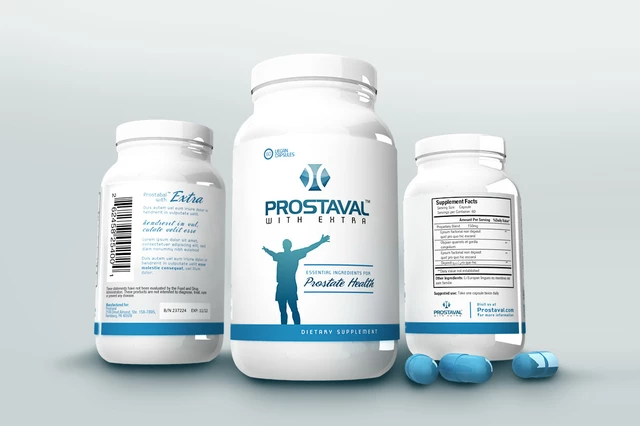
Why Natural Cervical Preparation Became a Hot Topic
People have talked a lot about natural labor prep for centuries, but it wasn’t until misoprostol, a powerful medication, became mainstream that patience with natural ways started to fade. Doctors and midwives used to take more time and use gentler methods. Now, many are swinging back: is there a safer, less intense way to help the body get ready for birth? The short answer is yes, but results aren’t one-size-fits-all.
Moms-to-be have a handful of good reasons for looking into natural cervical ripening. Some want to avoid the side effects misoprostol can bring, like heavy cramps, fever, or upset stomach. Others just prefer to work with their bodies, not against them. It’s not just about ideology—actual research from observational studies backs up the benefits and safety of certain methods, though they work slower than pharmaceuticals.
Since the late 2010s, surveys from pregnancy forums and doula networks hint at a quiet boom in herbal and mechanical induction interest. Take, for example, a 2023 survey from the Birth Network Alliance that reported nearly a third of U.S. mothers researched at least one non-drug cervical softening method before their due date. There’s a strong appetite for info—and a lot of confusion. What works, what doesn’t, and what’s just social media hype? We’ll peel back the layers starting now.
If you’re curious about prescription-free prep, you’ll meet science-backed facts, practical how-to’s, and even a few surprises (yes, there’s more to this than raspberry leaf tea). Whether you’re prepping for a routine delivery, managing health conditions, or wanting the gentlest start for baby, knowledge truly is power.
Understanding Cervical Ripening: What Actually Happens?
When we talk about cervical softening methods, it pays to get the basics right. Your cervix isn’t just a door waiting to swing open. It’s a tough, muscle-packed passage that must relax, thin out, and open (dilate) for birth to begin. The process is called ripening, and it’s mainly driven by hormones—especially prostaglandins, which tell the cervix’s collagen fibers to break down.
Misoprostol works by mimicking prostaglandins. It cracks open collagen, helping the cervix to soften and open. But what about natural alternatives? Some herbs jolt the body’s own prostaglandin production. Others work by improving blood flow or relaxing smooth muscle. Mechanical methods (think: dilator rods or gentle physical stretching) actually nudge the cervix into action by direct contact, sparking a cascade of signals for softening.
You might be surprised: the natural process can take from a few days to well over a week, even with active measures. Pharmaceuticals like misoprostol can get things rolling in hours, but not without a higher risk of side effects. Researchers repeatedly say that natural and mechanical options take longer—but are often easier on the body. A 2022 review in the "Journal of Maternal-Fetal & Neonatal Medicine" found slower ripening with herbal and mechanical methods, but fewer cases of scary complications like rapid labor or uterine hyperstimulation. For plenty of healthy pregnancies, that tradeoff is worth it.
But here’s where it gets tricky: anyone with a pregnancy complication should talk to their provider first. Sometimes speed is essential, and there’s no shame in blending approaches. But for most healthy, full-term pregnancies, nature’s tempo can be just right.
Herbal Allies: What the Science Says About Plant-Based Cervical Softeners
Let’s get specific about the herbal options everyone whispers about at prenatal yoga: which ones do more than just taste earthy? The standouts for herbal labor induction are evening primrose oil, red raspberry leaf, and black cohosh. Some traditions use blue cohosh or castor oil, too, but these last two come with bigger warnings and more side effect risks.
Evening primrose oil (EPO) is probably the most famous. It’s packed with gamma-linolenic acid, a substance that the body turns into prostaglandins. Theoretically, this helps soften the cervix. A 2021 clinical trial published in "Complementary Therapies in Medicine" showed women who used EPO (500-1000mg orally or as vaginal capsules) in the last two weeks of pregnancy had slightly faster cervical ripening, but not a major drop in C-section rates or labor times. Think of EPO as a gentle nudge, not a magic bullet.
Red raspberry leaf tea is everywhere in natural birth circles. Midwives have used it for hundreds of years to tone the uterus and prep the body for delivery. Small studies, like one in New Zealand in 2020, found high rates of user satisfaction and mild improvement in labor progression, but the data isn’t jaw-dropping. Still, it’s safe for most and offers a little boost without obvious downsides.
Black cohosh is another big player. Used by traditional communities for generations, it acts more like a muscle relaxant than a true prostaglandin booster. Not all practitioners are fans, as it can interfere with some medications and, in rare cases, has been linked to minor liver effects. But for otherwise healthy women, clinical trials show few bad reactions at moderate doses (usually as a tea or tincture).
Some folks bring up castor oil, probably the oldest "let’s get things moving" remedy in the book. It can produce contractions, but side effects like nausea, cramps, and even diarrhea are so common most providers skip recommending it. Blue cohosh, once widely used, is almost never advised now outside specialized settings due to possible cardiovascular risks. The takeaway? Stick with EPO and raspberry leaf, both with the blessing of your healthcare team.
| Herbal Method | Suggested Dose | Main Effect | Side Effects |
|---|---|---|---|
| Evening Primrose Oil | 500-1000mg twice daily | Mild softening | Rare: mild GI upset |
| Red Raspberry Leaf | 1-3 cups tea/day | Uterine tone | Very mild, if any |
| Black Cohosh | 20-40mg capsule or 1 cup tea | Muscle relaxation | Rare (GI or mild headache) |
Key tip: Always check labels for trusted brands and organic sourcing. And if something feels off, stop and talk to your provider right away.

Mechanical Methods: Beyond Herbs—Simple Tools That Really Work
While herbs rely on body chemistry, gentle labor prep sometimes calls for hands-on help. Mechanical methods are exactly what they sound like—physical nudges for the cervix. Several types exist, but some are way more gentle and accessible than you might think.
Membrane sweeping, a technique done during a prenatal checkup, is a mild go-to. The provider uses a gloved finger to gently separate the amniotic sac from the lower part of the uterus. This triggers your body’s own ripening cascade by releasing prostaglandins. Studies show it can lower the chance of needing stronger medical induction, especially in first-time moms. It can be slightly uncomfortable, but the risks (like low-level cramping or minor spotting) are usually brief and much less than pharmaceutical induction.
Another popular mechanical option is the Foley balloon catheter. This is a soft tube with a small balloon at the end, placed just inside the cervix and inflated with saline. Over hours, the gentle pressure causes the cervix to soften and open. Some midwives use even simpler "cervical dilators"—sterile seaweed rods known as laminaria. As these rods absorb moisture and swell, they very slowly and gently open the cervix. Both tools are backed by clinical research from the past decade. Foley, in particular, has become a favorite for people who want a completely medication-free start to labor.
Curious about at-home tricks? Some people swear by using a yoga ball for gentle hip-opening exercises or walking up stairs sideways to give gravity a hand. While there’s not tons of formal data behind these, physical movement and upright posture are linked to better cervical readiness and even slightly shorter labors. Just remember, no method is risk-free—keep in touch with your support team, especially if your water breaks or you have steady contractions.
- Membrane sweep: Quick, office-based, brings the natural prostaglandin boost.
- Foley balloon: Slow, steady, safe, mechanical dilation with very low risk.
- Laminaria: Natural, plant-based rods, even gentler than the balloon.
- Physical activity: Helps align baby and encourages softening—but don’t overdo it.
Small but real risk: All these methods can sometimes start labor faster than expected. Have your hospital bag ready if you’re trying any mechanical method close to your due date!
Choosing The Best Cervical Softening Approach For You
Picking the right route through this maze can feel overwhelming. Comparing misoprostol alternatives gets a lot easier when you look at the big picture: what are your goals, how fast do you need results, and what makes you feel safest? Each method—herbal, mechanical, or pharmaceutical—has its place. For some, combining a gentle herbal protocol with occasional walking or a yoga ball routine does the trick. Others may need a helping hand from membrane sweeps, especially after 39 weeks.
If you want to dive into more detailed comparisons and options, the article on misoprostol alternative methods offers a goldmine of information, with breakdowns of safety, speed, and user experience. Remember, no single method fits every body or birth plan.
A good strategy: Start with the most gentle, gradual methods first if you have time and there aren’t pressing risks. If things are slow to start, or there’s a medical need, you can scale up to mechanical or medication-based interventions. Many midwives build a "stair-step" plan: begin with raspberry leaf tea at 36 weeks, add evening primrose oil as you approach term, use exercise and upright positioning, then consider sweeps or balloon if needed as the due date approaches—or if induction becomes medically necessary.
Be honest with your team about what matters most. If avoiding harsh side effects is key, go slower. If speed matters because of a health condition, modern medicine is there for a reason. Real birth stories show it’s possible to blend gentle prep with science-backed safety. One 2023 case series from a Chicago hospital found that when women doubled up on movement, hydration, and manual methods like membrane sweep, successful cervical ripening doubled compared to those who went straight to medication.
Safety always comes first: avoid any herb or method not cleared by a reputable practitioner. There’s no shame—ever—in asking for help or changing your plan as labor approaches.
Extra Tips, Facts, and Common Mistakes For Natural Labor Prep
People make a few classic mistakes on the path to gentle cervical softening. Overdoing herbs is one—more is not always better, and dosing safely matters as much as the method. Skipping hydration and rest also backfire, since tissues soften best when the whole body is well hydrated.
Useful fact: A 2020 meta-analysis from the "Birth Issues Review" journal found that hydration, sleep, and emotional support all made a bigger difference for unmedicated labor than any one herbal supplement. Another tip: if you use teas (like raspberry leaf), freshly steeped blends are stronger, and adding a slice of orange or lemon can help absorb plant nutrients better.
Don't ignore prep for your mind too. Stress hormones (like adrenaline) can slow cervical ripening. A real-world trick: Five minutes of slow breathing, a light walk, or chatting with someone you trust lowers those hormones and nudges your body closer to readiness.
Before trying any herbal or mechanical tool, read the label, check for professional guidance, and watch for allergic reactions. Never use suggested "DIY" methods found on social media (like strong castor oil doses or inserting objects at home) without medical supervision—some techniques circulating online are more risky than they seem! Stick with proven, safe options and don’t rush things unless absolutely necessary.
Biggest winner: working with trustworthy professionals who understand your goals. A good support network means you can pivot as your birth story unfolds, keeping your plan flexible and centered on safety and comfort.
So, while misoprostol changed the landscape of labor induction, there’s a solid case for exploring misoprostol alternatives—especially if you want to give your body a gentle nudge or avoid intense pharmaceuticals. It’s a story of patience, smart choices, and staying open to help whenever you need it most.









10 Comments
Evening primrose oil gets turned into prostaglandins which can help soften the cervix. The usual dose is 500‑1000 mg twice a day.
Most of the “natural” hype ignores the fact that evidence is thin and side‑effects still exist. Stick to proven methods.
Herbal methods rely on the body’s own prostaglandin pathways. Evening primrose oil supplies gamma‑linolenic acid that the conversion enzymes can use. Red raspberry leaf provides mild uterine toning without strong contractions. Black cohosh acts more like a muscle relaxant than a prostaglandin booster. The dosage recommendations vary widely across studies and practitioner experience. A typical schedule starts with a low dose in the early third trimester. Increase the amount gradually as the due date approaches. Some women report feeling a subtle increase in pelvic pressure after a few days. Others notice no change until the cervix reaches a Bishop score of six. The variability in response reflects individual hormonal balances. Mechanical methods such as a Foley catheter create pressure that triggers local prostaglandin release. Laminaria strips absorb moisture and expand, gently dilating the cervical canal. Membrane sweeping performed by a clinician can be done as early as 38 weeks. The procedure simply separates the amniotic membranes from the lower uterus. While generally safe the sweep may cause light spotting or cramping. Combining a modest herb regimen with a gentle sweep often yields the best compromise between speed and comfort.
If you skip hydration you’re basically sabotaging any natural method.
I totally get how overwhelming the options can feel, just remember to stay hydrated and trust your instincts 😊
Oh sure, let’s all abandon centuries of medical progress because a blog post said ‘nature knows best’. Ignoring proven pharmacology in favor of a tea party is not bravery, it’s reckless. If you end up in a marathon contraction without a plan, don’t blame the doctor for stepping in. The uterus isn’t a yoga mat you can stretch at will.
A balanced approach often yields the safest results. Begin with a daily cup of red raspberry leaf around 36 weeks, then introduce evening primrose oil (500 mg twice daily) after confirming with your midwife. Incorporate gentle pelvic tilts and upright walking to promote cervical effacement. Schedule a membrane sweep at 38–39 weeks if you desire additional prostaglandin boost. Always keep a clear line of communication with your care team to adjust the plan as needed.
Esteemed birthing community, let us consider the physiological symphony orchestrated by the cervical extracellular matrix. The gradual remodeling of collagen fibers is a marvel that no synthetic agent can wholly replicate. When herbal agents such as evening primrose oil are judiciously administered, they act as conductors, subtly enhancing endogenous prostaglandin synthesis. Mechanical dilation, performed with a Foley catheter, offers a tactile catalyst, directly stimulating the cervical stroma. Yet, each intervention must be calibrated to the patient’s unique hormonal milieu and obstetric history. It is through this calibrated choreography that a harmonious labor may be achieved.
Only in America would someone think they can ditch proven meds for some tea and call it a victory 🇺🇸💥! Get real, you’re not a pioneer, you’re just scrolling TikTok. If you want a safe birth, listen to the pros not the hype 😂!
Hey love try the raspberry leaf tea it’s simple chill and usually safe